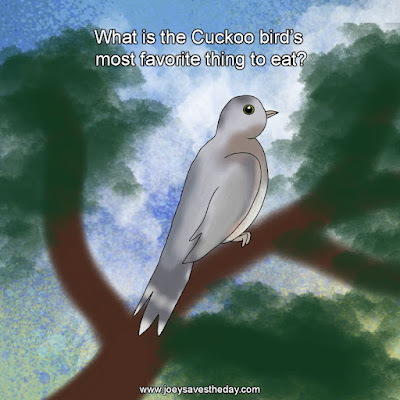Dragonfly Facts
Today, I am going to share some quick facts about the beautiful and whimsical dragonflies. Dragonflies are flying insects. Did you know that there are over 5,000 species of dragonflies all over the world? Can you guess which continents dragonflies live on? Yes, you guessed it right. Dragonflies are present on every continent except Antarctica. Some scientists say that dragonflies have been here long before dinosaurs ruled the earth!
What is your favorite type of dragonfly?
With your parent/caretaker’s permission, you can click on the
link below to see some pictures of dragonflies: Dragonflies.
Facts about dragonflies:
1. The scientific name for dragonflies is Anisoptera. Here
is a list of names of some of the different types of dragonflies:
- Butterfly Dragonfly
- Damers
- Emerald Dragonfly
- Meadowhawks
- Micrathyria
- River Cruiser
- Tigertail Dragonfly
- Skimmer dragonfly
- Spiketail Dragonfly
- Wandering glider
2. The globe skimmer, also known as the wandering glider dragonfly, is one of the most common types of dragonfly. It can be found on almost all continents except Antarctica.
3. The Hine's emerald dragonfly, also known as the Ohio emerald, is one of the rarest types of dragonflies. It is currently on the
endangered species list.
4. There are many colors of dragonflies, but one of the rarest is pink dragonflies.
5. Dragonflies are insectivores/carnivores. Carnivores means
that they only eat meat. Dragonflies eat flying insects and other insects.
Dragonflies are primarily diurnal and prefer to hunt for food during daytime
hours. Diurnal means dragonflies are awake during the daylight hours.
6. A group of dragonflies is called a cluster or a flight of dragonflies.
7. Dragonflies are cold-blooded and love to be in the sun.
The sun helps them regulate their body's temperature.
8. Dragonflies have a short life cycle. Some dragonflies can
live up to 56 days or less.
9. Dragonflies live around streams, lakes, ponds, and other
wetlands.
One last remarkable fact:
IN CASE YOU WERE WONDERING, YES, DRAGONFLIES POOP!
Have you ever wondered how these insects manage their waste? Let’s take a dive into the less talked about yet equally intriguing aspect of their excretion (POOP) process.
The Digestive System of Dragonflies:
Dragonflies have a complex digestive system that begins with their mouth, designed to capture and eat prey. Once their food is digested, the waste products are processed in the digestive tract. Unlike humans, dragonflies have a unique structure at the end of their bodies known as the rectal chamber, which serves as a storage space for waste.
The Excretion Station:
When it’s time for a dragonfly to excrete, it utilizes the rectal chamber as its command center for waste management. By contracting their abdominal muscles, dragonflies expel waste from their rectal chamber. The process is efficient and allows them to maintain their cleanliness, even while on the move.
A Flight with a Surprise:
Interestingly, dragonflies often release their waste mid-flight. So, the next time you admire these unique creatures zipping through the air, remember that they might be taking care of their natural elimination process!
Share a fun fact about dragonflies with us?
Get your free dragonfly printable worksheet here:
Dragonfly worksheet
Visit my printable section for a wide selection of
worksheets and coloring sheets!
Books about dragonflies:
1. Are You a Dragonfly? by Judy Allen
2. Fast Facts About Dragonflies by Garstecki-Derkovitz
3. Dragonflies: Q&A Guide by Ann Cooper
4. Dragonflies: Catching - Identifying - How and Where They
Live by Chris Earley
5. The Wonderful World of Dragonflies by Mimi Jones
Parents/caretakers, be sure books are child-friendly before
reading them to your child/children.
Short story alert:
There once was a beautiful emerald-green dragonfly who
loved to fly from pond to pond in search of food! One day, she couldn’t find flying insects to eat at her usual eating spots on the pond. So, she went on
an adventure, flying high in the sky till she came to this large lake. There
were flying insects everywhere. Oh, how happy she was! She spent all day eating
all the flying insects she could. She was filled with joy, and her belly was
filled with food. She flew back to her pond and slept all night. THE END!
Thank you for reading my post!! “Believe that
life is worth living, and your belief will help create the fact.”-William James
Check these free printables out:
http://www.joeysavestheday.com/p/printables.html
Follow me on Instagram:
https://www.instagram.com/mimijoey444/
Books I have written:
http://www.joeysavestheday.com/p/blog-page_16.html
Feature your book here:
http://www.joeysavestheday.com/p/book-of-day.html
Mimi is the author of the JOEY SAVES THE DAY! book series and other titles. She loves learning, reading, drawing, and writing. She is a homeschool mother of two children. She has two adult children that have already left the nest.
Come back soon for more quick facts!





















